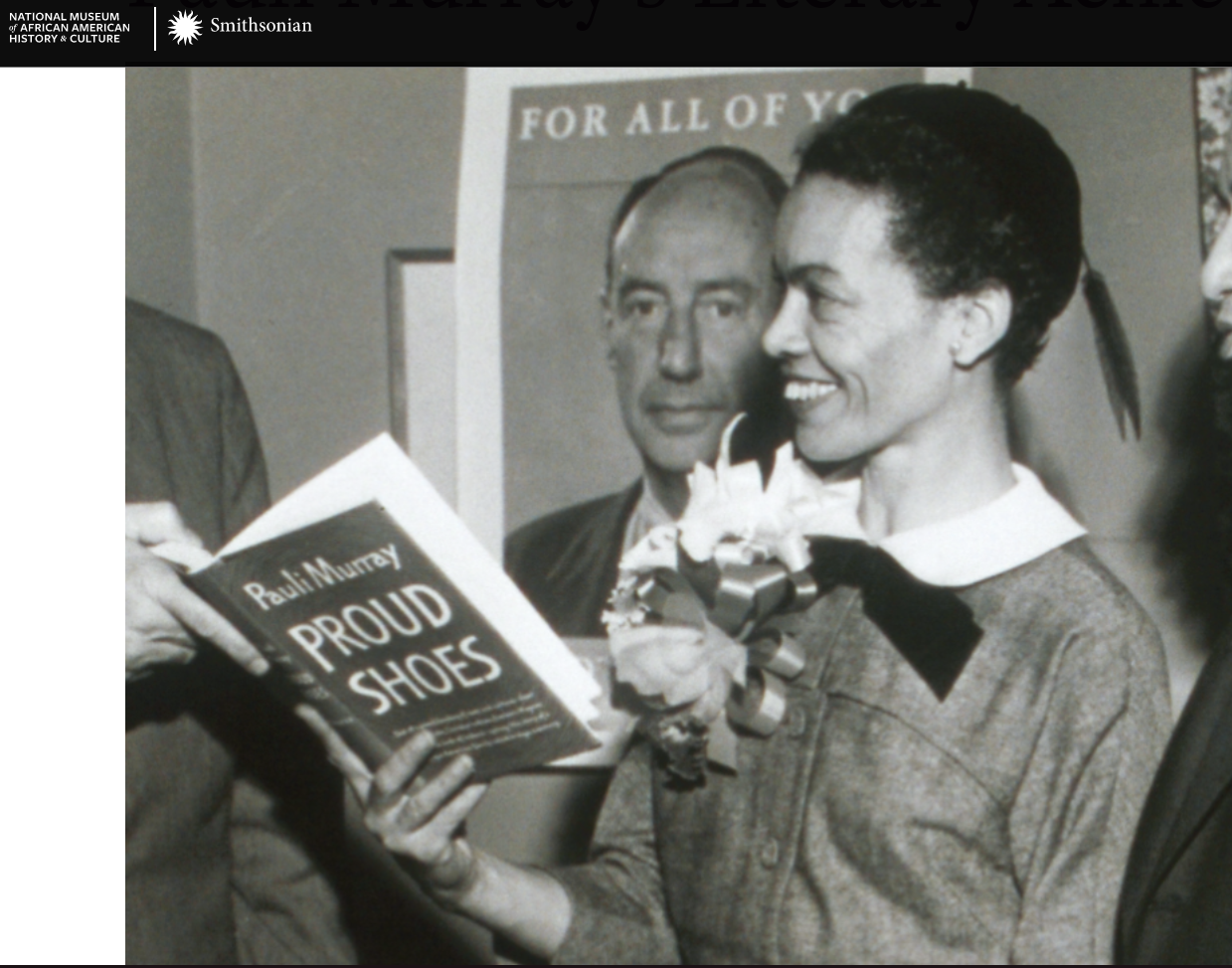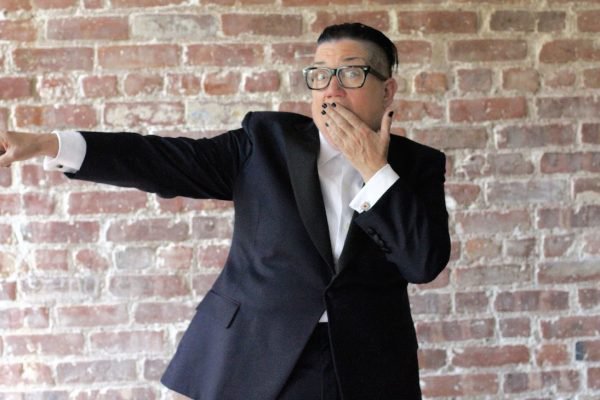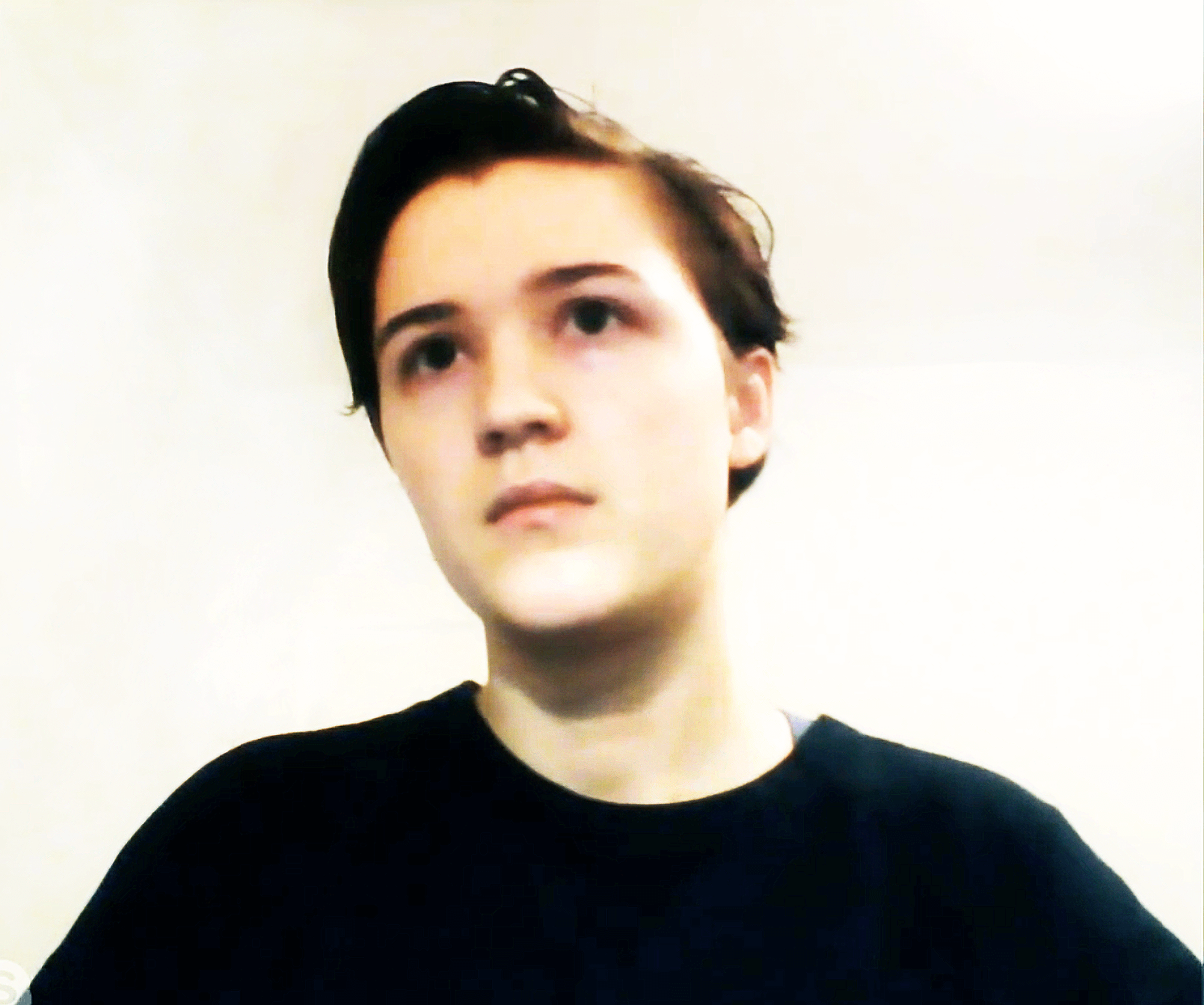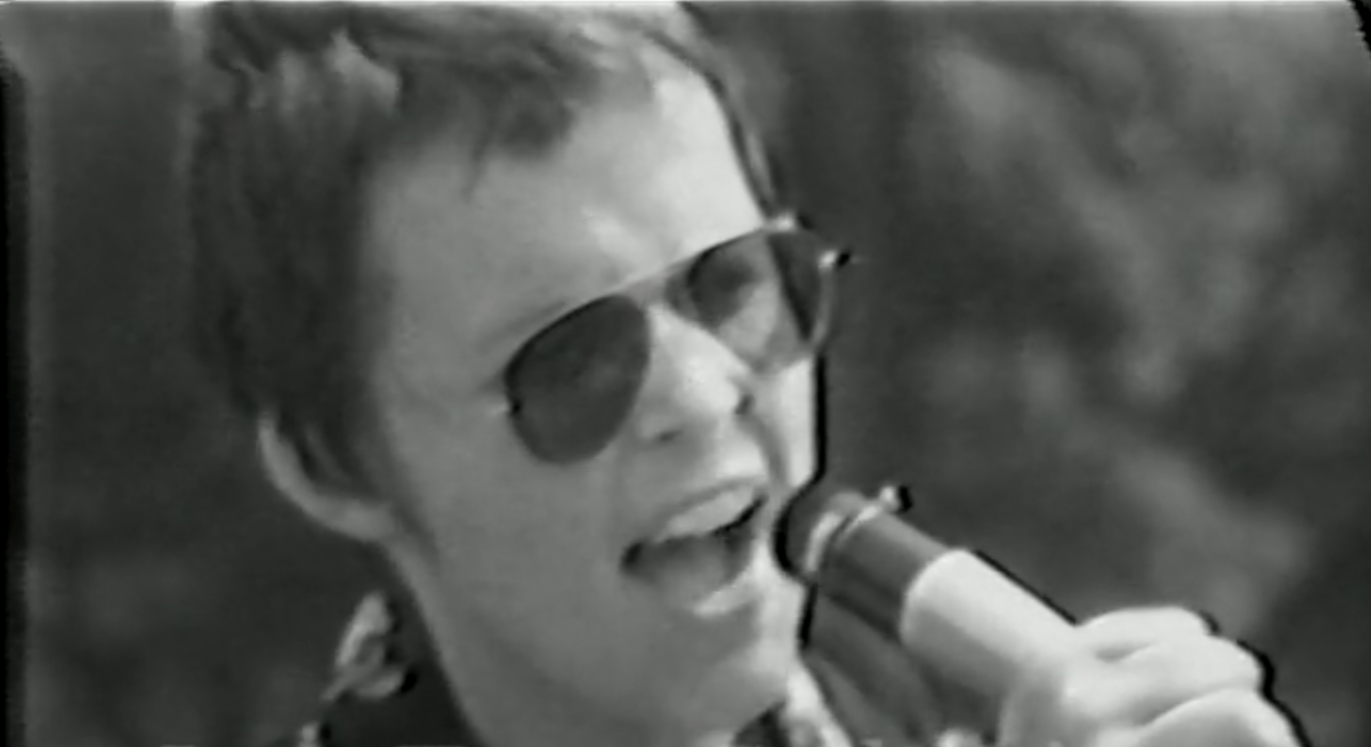“My name is Pauli Murray. My whole history has been a struggle in a society dominated by the ideas that blacks were inferior to whites, and women were inferior to men.” —Pauli Murray
The grave robbers are at it again. The latest sacrificial lamb, Pauli Murray, a woman whose legacy changed the course of history. She spent her life fighting for women and racial equality, and in death, the buzzards have picked her for parts.
“If you rip away everything, oppression is the business of not respecting one’s personhood.” —Pauli Murray
There’s been a growing number of claims that Pauli Murray was not a woman. Most recently, the Los Angeles Times, felt it was appropriate to publish an article expunging Murray from the category of woman. And Amazon Studios just released a documentary doing the same.
In the Los Angeles Times article, all use of “she” and “her” is avoided, and they go so far as to write “the first Black ‘woman’,” adding air-quotes to woman to suggest we shouldn’t categorize Murray as such—All the while admitting that Murray is being used to bolster a new narrative. Why? The claim here seems to be that it’s psychologically helpful (to gender ideologists) to unearth gay and lesbian figures and reinvent them as something ‘other than,’ to create a backdated history that validates their identities. Nary a thought for how the lesbian community might feel watching yet another shero ripped from what few pages we have in the his-story books.
Imagine you spend your entire life fighting for women—as Pauli Murray did—only to be cast out of the category of woman, after your death. Imagine a time where writers can’t just say you were the first Black woman to accomplish something, without adding air-quotes to the word “woman.” Imagine you were a founder of the National Organization for Women, only to be ejected from the category of woman, once you’re gone.

In the LA Times article, published September 17, Tre’vell Anderson, a self-described “non-binary person of trans experience,” does all of the above—referring to Murray as “they” and “them” throughout an entire article, before launching into the world’s longest diatribe about why Murray should be revised postmortem (citing others who agree). Seemingly unaware of the irony, Anderson writes that Murray experienced “erasure in life” and “Surely death would be the same.”
It seems every time we turn around, another woman has been erased and revised postmortem, by writers and publications who obsessively descend upon graveyards, searching, desperately, for the corpses of gay and lesbian figures that they can reinvent. All this, to create a fraudulent paper trail, a fraudulent history, built over our bones. I’ve been covering this disturbing and utterly disrespectful phenomenon for several years now, and there’s no real end in sight.
Pauli Murray, born November 20, 1910, achieved a level of accomplishment that was rare for women, and rarer still for Black women, in her time. She graduated from Hunter College in New York, and Howard University School of Law. She died July 1, 1985, leaving behind an incredible history.
Murray passed the California bar exam in 1945. She became California’s first Black Deputy Attorney General in 1946. Soon after, she was named “Woman of the Year” by both the National Council of Negro Women and Mademoiselle magazine. Murray authored a legal memorandum in what would be a successful effort to add “sex” as a protected class in the Civil Rights Act of 1964.
Murray authored a legal memorandum in what would be a successful effort to add “sex” as a protected class in the Civil Rights Act of 1964.
In 1965, Murray coauthored a landmark article with Mary Eastwood titled, “Jane Crow and the Law: Sex Discrimination and Title VII,” which was published in the George Washington Law Review. In 1965, she also became the first African American to receive a Doctor of Juridical Science degree from Yale School of Law. In 1966, Murray cofounded the National Organization for Women (NOW). Ruth Bader Ginsburg listed Murray as coauthor on her brief for Reed v. Reed, the 1971 Supreme Court case, which led to extending the Fourteenth Amendment’s Equal Protection Clause to women.

Speaking of postmortem revisions… In a post made on September 18, the ACLU took it upon themselves to erase the words of Murray’s colleague, the late Justice Ruth Bader Ginsburg, redacting “woman,” “she,” and “her” from the quote pictured above. So if you’re not a lesbian and you think this doesn’t affect you, think again. It’s all up for revision.
“Pauli was a feisty woman.” — Ruth Bader Ginsburg
From 1967 to 1968, Murray was vice president at Benedict College, before moving over to Brandeis University where, from 1968 to 1973, she taught law, African American studies and women’s studies (the later two of which were firsts for the university). In 1977, Murray became the first African American woman to be ordained as an Episcopal priest. From 1978 to 1985, Murray worked in a parish in D.C.
So how is it that an exclusively, innately, same-sex attracted woman, who dedicated much of her career to the advancement of women’s rights, came to be booted out of the category of woman? The usual: Obsessive overanalysis of typical lesbian issues—the same struggles you’ll find in most lesbian lives, as we try to fit ourselves into a world that still doesn’t want to make room for us. In fact, many lesbians continue to struggle with the term “lesbian”—a societally induced phenomenon I’ve written about a number of times, perpetuated even by those who purport to represent us.
Trans activist Nathaniel Naomi Simmons-Thorne views Murray as an early “transgender” historical figure, and has asked that historians and scholars refer to Murray using male pronouns. In a post still marked as his “Pinned Tweet,” Simmons-Thorne says he’s “reclaiming our transcestors,” and will be using “he pronouns in reference to Pauli.”

Rosalind Rosenberg, a historian, who wrote Jane Crow: The Life of Pauli Murray, published in 2017, decided to classify Pauli Murray as “transgender.” As a straight woman, who’s married with two sons and a grandson, Rosenberg explains that Murray, as a child, “insisted on wearing boys’ clothes, playing boys’ games, and doing boys’ chores.” She goes on to say it was fortunate that Murray’s Aunt Pauline, “accepted Pauli’s in-betweenness,” adding, “She called Pauli her ‘boy/girl.'”
Boys’ clothes, boys’ games, boys’ chores? Oh my! Tsk! Tsk!
Murray didn’t always conform to expectations—she often wore pants, shortened her name to Pauli, and was open about being in relationships with women. Murray struggled with internalized homophobia, and didn’t want to characterize herself as a lesbian, rather someone who very naturally fell “in love with the female sex.” She also had ‘gender’ confusion, common in most lesbians to some extent or another, as we’re coming to terms with same-sex attraction and grappling with sexist and heteronormative expectations. To reclassify Murray as a man, postmortem, on this basis, would be to reclassify most lesbians as men after they die.
“Rosenberg mostly takes Murray at her word, though she also adds a new one: transgender. Such retroactive labelling can be troubling, but the choice seems appropriate here… Still, Murray’s disinclination to identify as a lesbian rested partly on a misprision of what lesbianism means. By way of explaining why she believed she was a heterosexual man, Murray noted that she didn’t like to go to bars, wanted a monogamous relationship, and was attracted exclusively to “extremely feminine” women. All of that is less a convincing case for her convoluted heterosexuality than for her culture’s harsh assessment of the possibilities of lesbianism.” —The New Yorker
Murray suffered breakdowns regularly after the age of 19, sometimes resulting in hospitalization, and all triggered by internalized homophobia. In 1940, Murray was taken into custody by police in Rhode Island, after walking through town distraught about “the disappearance of a woman friend.” From there she was sent to Bellevue Hospital in New York City for psychiatric treatment. Not long after, in the spring of 1940, Murray and Adelene McBean, were arrested and jailed in Virginia, for sitting in the ‘whites only’ section of the bus, and refusing to sit at the back, where state segregation laws mandated Black people sit. In 1956, Murray met Irene Barlow and was in a relationship with her for nearly 25 years.
In the LA Times article, Anderson excuses the revision of Murray by saying it “helps situate the current sociopolitical fight of gender challengers and transgressors as part of a long legacy,” adding in parenthesis, as though an unimportant detail, “(Though Murray did not identify as nonbinary or transgender… activists and historians have encouraged use of gender neutral, or they/them, pronouns for Murray).”
Channing Joseph, a teacher at the University of Southern California is quoted as having said, “The more we can unearth those stories and make average people who don’t read history books aware that folks like us existed is psychologically important.” Joseph continues, “Knowing that you’re part of a history and because of that, you have something to be accountable to, a tradition to join and something that you too can leave for the future is vital.” Essentially Joesph, and so many others, are arguing that it’s okay to dig up the corpses of gay and lesbian people, lie, and reinvent who they were, because it’s helpful, psychologically, for some people.
In fact, the recent LA Times article spends more time explaining why it’s okay to rebrand Murray, than it does talking about Pauli Murray, what she accomplished, even after a tumultuous childhood—her mother dying when she was 3, orphaned as a teen, issues of being mixed-race, passing as white at times. They also fail to note why a female, born in that period of time, a Black female, a Black female attracted to other females, might fantasize that she’s male. Erasing pronouns erases the struggle she was up against on the basis of sex, compounded by race, and sexuality.
“At Howard, Murray’s race ceased to be an issue, but her gender abruptly became one. Everyone else was male—all the faculty, all her classmates. On the first day, one of her professors announced to his class that he didn’t know why a woman would want to go to law school, a comment that both humiliated Murray and guaranteed, as she recalled, ‘that I would become the top student.’ … Murray applied to Harvard for graduate work—only to get the Jane Crow version of the letter she’d once received from U.N.C.: ‘You are not of the sex entitled to be admitted to Harvard Law School.’ Murray, outraged, wrote a memorable rejoinder: Gentlemen, I would gladly change my sex to meet your requirements, but since the way to such change has not been revealed to me, I have no recourse but to appeal to you to change your minds on this subject…
Neither Murray’s own efforts nor F.D.R.’s intercession persuaded Harvard. She went to Berkeley instead, then returned to New York to find work. This proved challenging. At the time, only around a hundred African-American women practiced law in the entire United States, and very few firms were inclined to hire them. For several years, Murray scraped by on low-paying jobs…” —The New Yorker
The decision to cast Murray out of womanhood, as with any historical figure that’s been cast out, has caused a ripple effect, permitting others to do the same. Pauli Murray Center, in NC, writes “…we have chosen to use s/he and they/them pronouns when discussing Pauli’s early life and she/her/hers when discussing Pauli’s later years. When discussing Pauli Murray in general, we use any pronouns (she/he/they) or refer to Pauli by their name and/or title(s). We hope this strategy will encourage the reader to embrace the complexity of the concepts of gender, gender identity, and gender expression.”

In the Amazon documentary, My Name is Pauli Murray, Murray’s been rewritten as “non-binary.” The description omits the word woman and avoids female pronouns. This mirrors the Netflix documentary on Stormé DeLarverie, among others, including drag performers, where they are reinvented as “trans.” A number of mainstream movies have been doing this.
At times in her life, because of racism, Murray tried to pass as white. Imagine now, historians scrutinizing these details, and claiming she was in fact white, and that all she’s done should be recorded as though she were a white woman. Now consider, that throughout her life, because of sexism, Murray thought maybe she should’ve been a guy, so the historians decide the credit for all she’s done, now goes to a white guy. Finally, because of homophobia, Murray struggled with internalized homophobia, and even though she was exclusively same-sex attracted, some historian collects evidence that she couldn’t deal with being known as a lesbian. So, where are we at now? All Pauli Murray has accomplished was accomplished by a heterosexual white man. Bravo! A straight white man who advanced our rights!
In accordance with these new rules—where non-lesbians can dissect every single thing we’ve ever thought, journaled about, said, or done, throughout our lives—I too could just as easily be reinvented, postmortem, as a straight white man. But I certainly am not, and neither was Pauli Murray (out of caution, I want to make this abundantly clear). And while this isn’t something I ever imagined I’d have to explain in such detail, we’ve been put in a position to do so—to painstakingly spell out to non-lesbians, why it’s not okay, under any circumstance, to reinvent us when we’re dead.
In fact, there’s not a single lesbian in my circle that would be safe from revisionists after death. Not a single one. Not with all the ‘boy’ names, ‘male’ interests, ‘mens’ haircuts and clothes among us… And I’m sure nothing would please the revisionists more, than for all of us to concede that we really were men all along.
Rewriting Pauli Murray as “transgender,” as “they/them,” “he/him,” “nonbinary,” or as a “man,” is not only dishonest, deeply sexist, and homophobic, it does a great disservice to her legacy. It erases the sexism and homophobia that impacted her so deeply. It erases a history that was so turbulent, so dismissive, so unforgiving of female bodies, that it left women wanting a way out.




